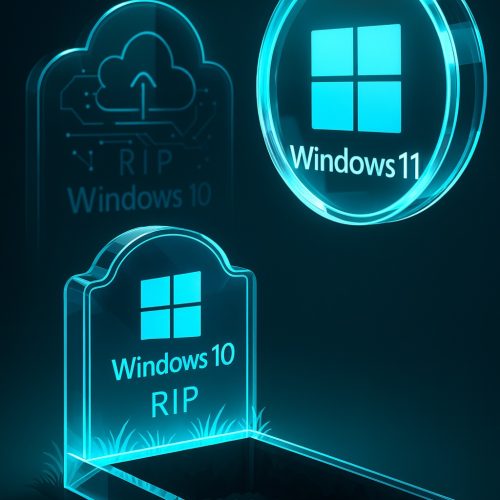
Why Windows 10 End-of-Life Matters
Why Windows 10 End-of-Life Matters
How smart IT decisions can help you stay secure and save money
Windows 10: On October 14, 2025, Microsoft officially ended general support. For small businesses — especially those managing sensitive data, compliance requirements, or multiple user devices — this isn’t just a software update. It truly signals a change in your foundational IT environment.
Why support ending is a meaningful milestone
Once support ends, a system on Windows 10 will stop receiving:
- Routine security patches for new threats.
- Compatibility updates for newer applications and hardware.
- Assurance that it meets standards for regulated industries (healthcare, finance, legal) that expect supported platforms.
What that means in practice: a machine may continue to run, but its risk profile increases. It can become a target for cyber-attacks, vendor support may dry up, and you may find that adding or replacing hardware or software becomes more expensive or even impossible.
Good news: You don’t have to rush blindly
Switching you over to the latest OS right now isn’t the only route — it’s about mapping a smart plan. And there is an option to extend your coverage for another year if you need breathing room.
The one-year extension option
Microsoft offers an Extended Security Updates (ESU) program for Windows 10 devices, which lets you continue receiving critical security updates beyond October 14, 2025 — up until October 13, 2026 for enrolled consumer PCs.
Here are the key points:
- To enroll, your device must be running Windows 10 version 22H2 with all updates applied.
- There are three main routes for consumers:
- Back up (sync) your settings to a Microsoft account (using Windows’ built-in backup) → free one-year ESU.
- Redeem 1,000 Microsoft Rewards points → also free one-year ESU.
- Pay a one-time fee (around US $30) → one-year ESU.
- Important: enrolling doesn’t get you new features or full technical support — only critical and important updates.
- The ESU enrollment interface (“Enroll now” button) is rolling out in waves — you might not see it right away. Windows Latest
What to interpret here:
Think of this as a grace period, not a permanent fix. If you’re not ready to move to Windows 11 right away (hardware constraints, budget timing, other priorities), this gives you leaner room to breathe while planning. But it doesn’t replace the longer-term strategy of running on a fully supported platform.
Why migrating to Windows 11 (or otherwise modernizing) still makes sense
Even with that extension option, there are good business reasons to evaluate what’s next:
- Windows 11 comes with stronger built-in protections (for example, hardware-based security like TPM 2.0, better credential protection, secure boot).
- It’s better aligned with newer applications, cloud tools, AI-driven features and modern productivity workflows.
- Over time, keeping older systems becomes more expensive: think compatibility gaps, vendor support ending, hardware replacements, more manual work.
- For an MSP-oriented business (yours with JS3 Consulting), showing clients that “we’re proactively managing your platform to keep you secure, supported, and cost-efficient” is a strong differentiator.
What you can do now (as a small business)
Here’s a practical checklist:
- Audit your environment — Identify all machines still running Windows 10, determine whether they meet Windows 11 requirements (or whether a different supported path is better).
- Segment your strategy — Some devices may be fine for a longer transition period; others (those handling regulated data, critical infrastructure, or customer-facing) may be higher priority.
- Decide on the interim coverage — If you cannot upgrade everything by October 2025, consider enrolling in ESU for the devices you’re keeping. At the very least, plan for which devices will receive it and when.
- Plan the migration — Work out timelines, budget, resources, downtime, user training. Break it into phases.
- Communicate with stakeholders — Whether it’s your team, clients, or vendors, make sure everyone knows the what/why/how of the upgrade path.
- Monitor and maintain — Post-migration, operate on a schedule for updates, hardware refreshes, application compatibility checks. It’s not “upgrade once and forget”.
Final thoughts
The October 2025 mark for Windows 10 support isn’t simply about “obsolete software” — it’s a turning point. For small businesses, it’s a chance to step back, reflect on the IT landscape, align it with security, compliance, productivity and cost goals — and then execute thoughtfully.
If you’re running Windows 10 today, know that you can continue with it for a bit longer (thanks to the ESU option). But view that as time earned, not time unlimited. Use it to do things right — rather than let constraints force rushed decisions.
JS3 Consulting can help put together a customized migration plan (inventory, cost modelling, downtime minimization), We’d be happy to walk you through that. Just click the button on the right to schedule a quick call.
